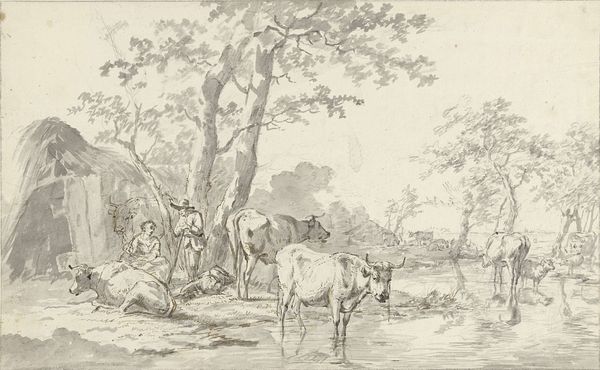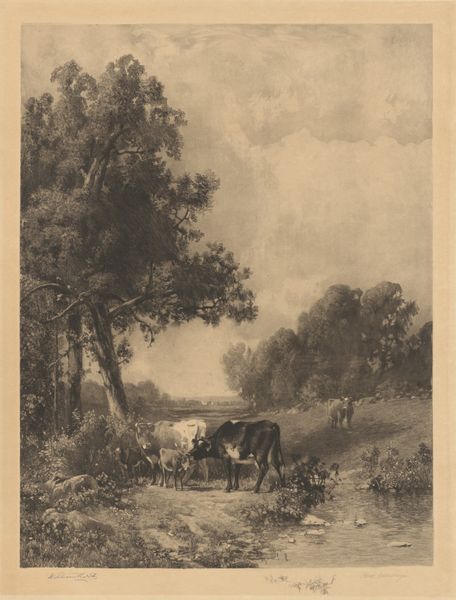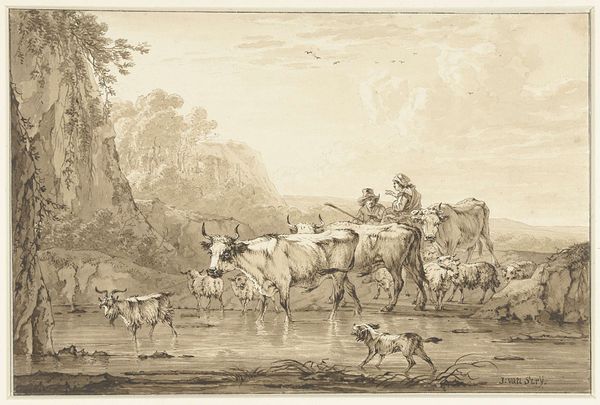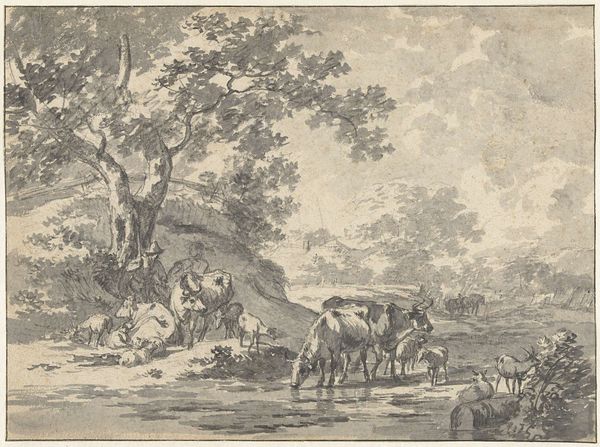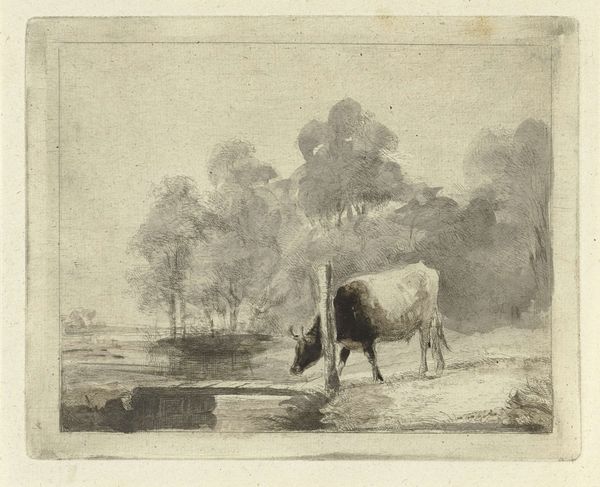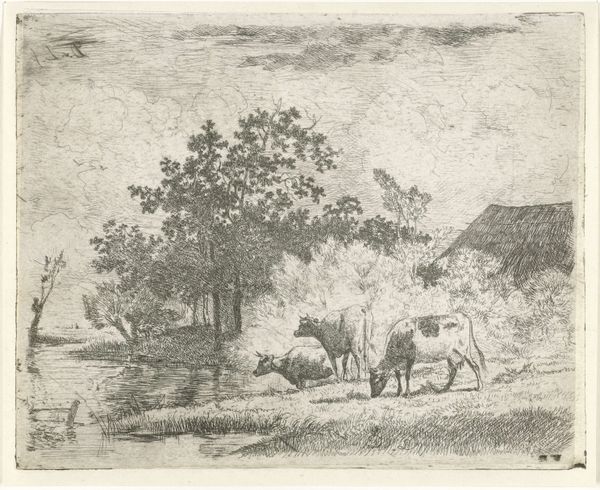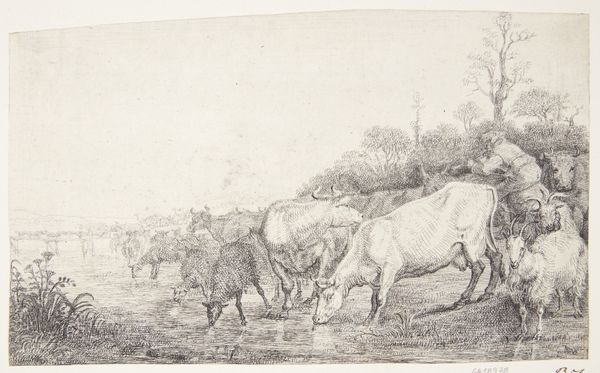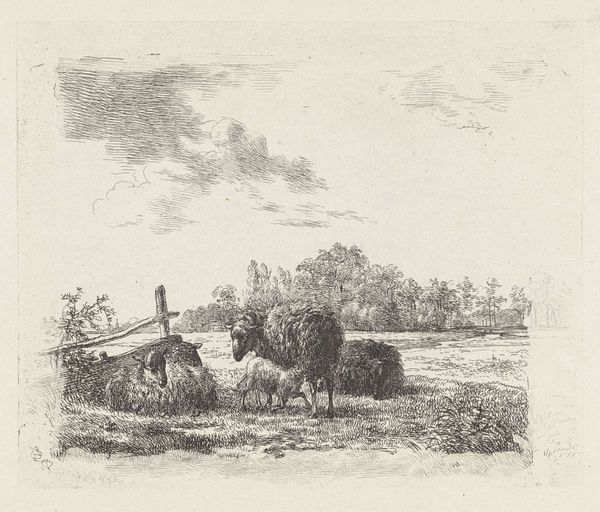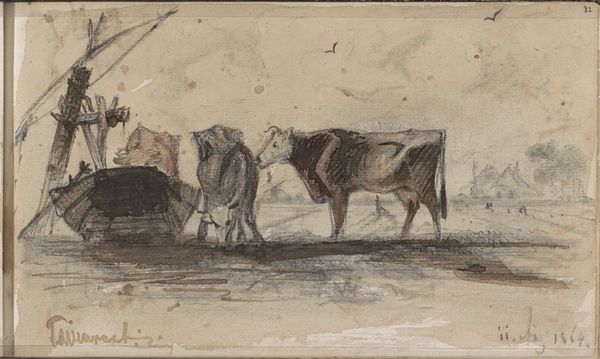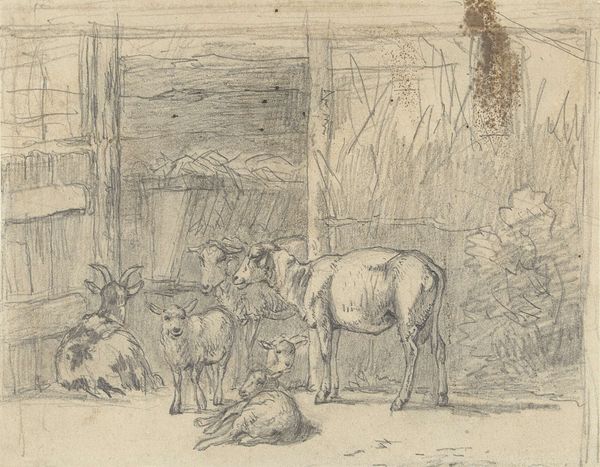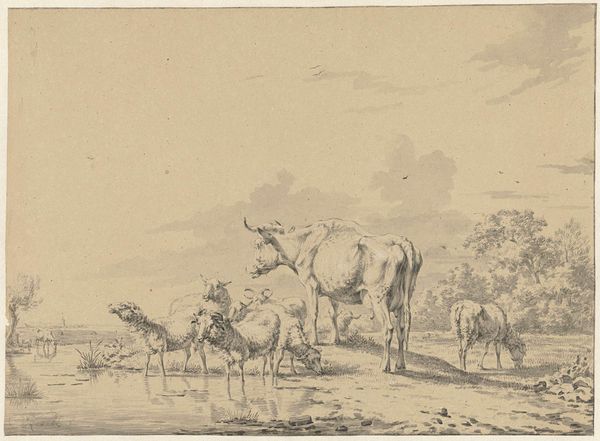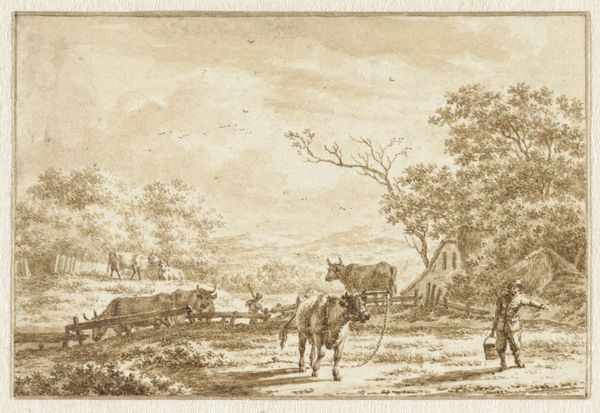
Landscape with Cowherd and Cattle; verso: Study of a Cow c. 19th century
0:00
0:00
Dimensions: 27.9 x 39.7 cm (11 x 15 5/8 in.)
Copyright: CC0 1.0
Curator: Let's discuss Constant Troyon's "Landscape with Cowherd and Cattle," a drawing from the 19th century residing here at the Harvard Art Museums. Editor: Immediately, I sense a pastoral calm. The muted tones and soft lines create a dreamlike image, evoking a connection to nature. Curator: Indeed. Troyon, as a member of the Barbizon school, sought to depict rural life and landscapes as they were, free from academic idealization. This scene, with its cowherd and cattle, reflects a connection to the land and labor. Editor: The placement of the figures, however, speaks to me of deeper symbolic relationships. The cowherd, almost blending into the bridge, oversees the cattle, suggesting a hierarchy. Is Troyon commenting on the social strata of rural life? Curator: It's possible. We can also consider the symbolic weight of the cow itself, traditionally associated with fertility, nourishment, and even, in some cultures, maternal power. Editor: A vital point. In an era grappling with industrialization and shifting social structures, Troyon's choice of subject matter and his return to the land could be seen as both a celebration of simpler times and a subtle critique of modernization. Curator: A fascinating tension, indeed. It seems that "Landscape with Cowherd and Cattle" invites multiple readings, reflecting the complex social and symbolic landscape of its time.
Comments
No comments
Be the first to comment and join the conversation on the ultimate creative platform.
